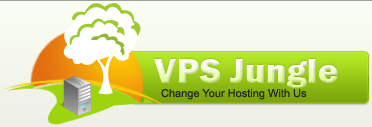Here’s a comprehensive guide to help beginners navigate cPanel effectively:
1. Accessing cPanel
To access your cPanel dashboard, you typically enter your domain followed by “/cpanel” in your web browser (e.g., www.buyandhost.in/cpanel). Log in using the username and password provided by your hosting provider.
cPanel offers an intuitive and easy-to-navigate graphical user interface (GUI), allowing users to manage their web hosting environment without needing advanced technical skills.
2. Dashboard Overview
The cPanel dashboard is divided into sections, each containing various tools and features:
- Files: Manage your website’s files and backups.
- Databases: Manage MySQL databases and access phpMyAdmin.
- Domains: Manage domains, subdomains, and DNS settings.
- Email: Manage email accounts, forwarders, and filters.
- Metrics: View website statistics and metrics.
- Security: Manage security features like SSL/TLS and IP blocking.
- Software: Install applications and manage PHP settings.
- Advanced: Access advanced features like Cron Jobs and Error Pages.
- Preferences: Update your account preferences and change passwords.
3. File Management
- File Manager: This tool allows you to upload, download, and manage your website files directly from your browser. Navigate through your directories, create new files/folders, and edit files using the built-in editor.
- Backup: Regularly back up your website files and databases to ensure you can recover from data loss. The backup tool in cPanel makes it easy to create and download backups.
Users can upload, manage, and organize website files through the File Manager tool. This includes the ability to edit files directly within the browser.
4. Email Management
- Email Accounts: Create and manage email accounts associated with your domain. You can set up email forwarders, auto-responders, and access webmail directly from cPanel.
- Spam Filters: Configure spam filters to keep unwanted emails out of your inbox. Use SpamAssassin and other tools to set up email filtering rules.
5. Domain Management
- Add-on Domains: Host multiple domains under a single cPanel account by using add-on domains.
- Subdomains: Create subdomains (e.g., blog.yourdomain.com) to organize and manage different sections of your website.
- DNS Zone Editor: Manage DNS records to configure how your domain is resolved.
Users can manage multiple domains, create subdomains, and configure DNS settings. This includes the ability to set up parked domains and add-on domains.
6. Database Management
- MySQL Databases: Create and manage MySQL databases for your websites. Use phpMyAdmin to interact with your databases via a web interface.
- Remote MySQL: Allow remote access to your MySQL databases from other servers or computers.
cPanel includes tools for managing databases, such as MySQL and PostgreSQL. It also provides access to phpMyAdmin for advanced database management tasks.
7. Security Features
- SSL/TLS: Manage SSL certificates to secure your website. Ensure that your site uses HTTPS for secure communication.
- IP Blocker: Block specific IP addresses from accessing your site to protect against malicious traffic.
- Hotlink Protection: Prevent other websites from directly linking to your media files, which can save bandwidth and improve security.
The control panel includes several security features, such as SSL/TLS management, IP blocking, and hotlink protection, to keep websites secure.
8. Installing Applications
- Softaculous/App Installer: Install a wide range of applications, including WordPress, Joomla, and Drupal, with just a few clicks. This tool simplifies the installation process and automatically configures your applications.
With tools like Softaculous, users can easily install a variety of applications, including content management systems like WordPress, Joomla, and Drupal, with just a few clicks.
Conclusion
cPanel is a powerful and user-friendly control panel that makes managing your website straightforward. By familiarizing yourself with its various sections and tools, you can efficiently manage your website’s files, emails, domains, databases, and security settings.
